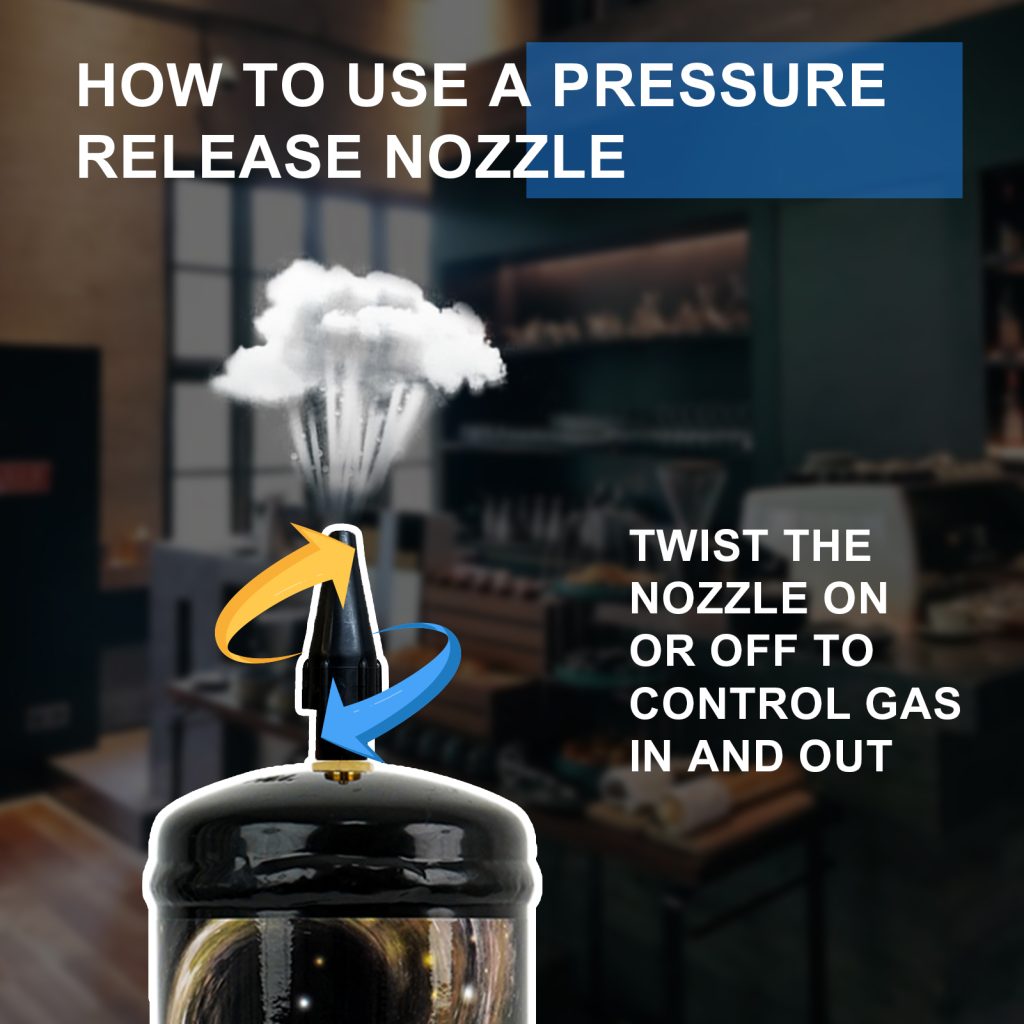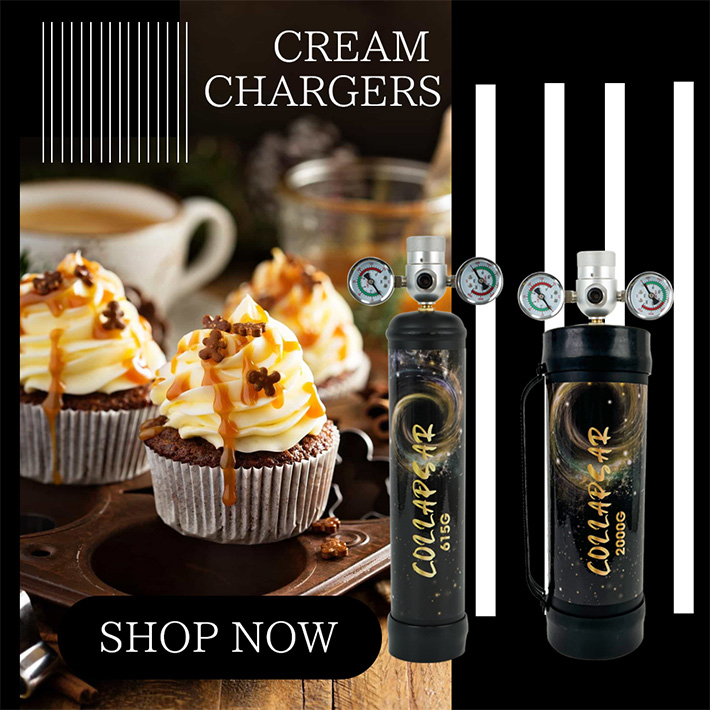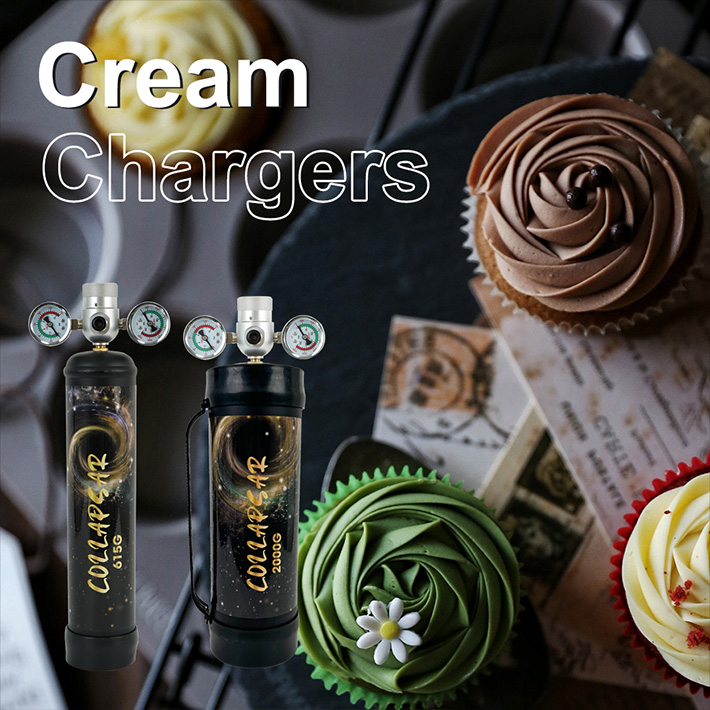The Whipped Cream Dispenser — Unraveling the Mechanics
A whipped cream dispenser is one of those kitchen gadgets that can seem like a luxury item but quickly becomes a staple once you’ve learned its powers. Used in both professional kitchens and homes, this device turns simple heavy cream into a light, airy, and delicious whipped topping, all with the press of a button. But have you ever wondered how a whipped cream dispenser works? Why is it so much more efficient than using a traditional hand whisk? Let’s dive into the science behind this fascinating tool.
At its core, a whipped cream dispenser operates on a combination of pressure, gas, and a simple chemical reaction that allows the cream to transform into a fluffy, rich topping. These dispensers are typically made of stainless steel, ensuring durability and a sleek, professional look. Inside the dispenser, the key components are the body, nozzle, and the N2O (Nitrous Oxide) gas charger, which is the secret to creating the fluffy texture we all love.
The Components of a Whipped Cream Dispenser
Before we get into the process, let’s break down the parts of a whipped cream dispenser.
The Body: The main compartment where the cream is stored. It’s usually a metal, food-safe container that can withstand high pressure.
The Nozzle: This is the spout from which the whipped cream is dispensed. It’s typically attached to the lid and is where the cream emerges in a cloud of light, airy goodness.
The N2O Charger: This small cartridge, often referred to as a gas charger, is a key player in the transformation of heavy cream into whipped cream. Nitrous oxide, or N2O, is a colorless gas that’s not only used in whipped cream dispensers but also in other applications, such as in dental surgeries and as a propellant for some food products.
The Science Behind It
The process begins when you fill the dispenser with heavy cream. Heavy cream has a high fat content (usually around 36-40%), which is essential for making whipped cream. The fat molecules in the cream are what allow it to trap air, forming those lovely peaks that make whipped cream so desirable.
Once the dispenser is filled, you screw on the lid and insert a nitrous oxide (N2O) charger into the charger holder. This is where the magic begins. When you press the button on the dispenser, the N2O gas is released from the charger and is forced into the cream under high pressure. As the gas dissolves into the cream, it expands, creating tiny bubbles and introducing air into the liquid.
The N2O gas does more than just add air, though. It also helps break down the fat molecules in the cream, making them more stable and less likely to separate. The result is a fluffy, smooth whipped cream that stays firm for longer than if you whipped it by hand.
Why Nitrous Oxide?
Now, you might wonder, why is nitrous oxide used instead of other gases like air? The reason lies in the unique properties of nitrous oxide. Nitrous oxide is not just a gas, but also a solvent that can dissolve into the cream. This makes it more effective than air, which doesn’t dissolve into the liquid as easily. The dissolved N2O forms tiny bubbles, creating the light, airy texture we associate with whipped cream. Nitrous oxide also has a cooling effect when released, helping keep the cream chilled while it’s being dispensed.
This is why whipped cream dispensers are a favorite among professional chefs and pastry experts. They provide control over the texture and consistency of the cream, ensuring that it’s consistently perfect, every time. And it’s not just limited to whipped cream; the dispenser can also be used for mousse, espuma, and even some cocktails.
Using a Whipped Cream Dispenser — Tips, Tricks, and Versatility
Whipped cream dispensers aren’t just for professionals—they’re a great addition to any home kitchen. If you’ve ever wondered how to get that perfect swirl of whipped cream on top of your desserts or drinks, this gadget can make it happen with ease. But how do you use it? What’s the best way to ensure you’re getting the perfect result every time? Here’s a guide to using a whipped cream dispenser and some creative ways to take advantage of its versatility.
The Step-by-Step Guide to Using a Whipped Cream Dispenser
Using a whipped cream dispenser is straightforward, but there are a few things you should keep in mind to ensure the best results.
Fill the Dispenser: Start by pouring cold heavy cream into the dispenser. Make sure not to overfill it—leaving some space allows the gas to properly mix with the cream. You can also sweeten the cream by adding sugar or flavored syrups at this stage.
Seal the Lid: Once the cream is inside, close the dispenser with its lid. The lid usually features a tight seal, which helps maintain the high pressure needed to turn the cream into whipped cream.
Insert the Nitrous Oxide Charger: Place a nitrous oxide charger into the charger holder and screw it onto the dispenser. As you tighten the charger holder, you’ll hear a small hiss as the gas is released into the cream. This is a sign that the gas is dissolving into the cream and preparing it for whipping.
Shake: After securing the charger, shake the dispenser a few times. This helps distribute the gas evenly throughout the cream, ensuring a consistent texture. A good rule of thumb is to shake it about 5-10 times.
Dispense: Now it’s time to dispense your whipped cream! Hold the dispenser with the nozzle pointing downwards, and gently press the lever. The whipped cream should flow out in a beautiful, airy swirl. If it’s not dispensing easily, give the dispenser another quick shake.
Creative Uses for Your Whipped Cream Dispenser
While whipped cream is the obvious choice for this gadget, its uses extend far beyond just topping desserts. Here are some fun and creative ways to make the most out of your whipped cream dispenser.
Flavored Whipped Cream: Add a twist to your whipped cream by infusing flavors like vanilla, cinnamon, or even mint. You can also experiment with liqueurs like Grand Marnier for an adult version.
Mousse and Espuma: Use your dispenser to make light and fluffy mousse or espuma (a Spanish word for foam). Simply blend ingredients like chocolate, fruit puree, or even coffee with a little bit of cream, and you’ll have a smooth, aerated dessert ready in seconds.
Cocktails: A whipped cream dispenser can be a game-changer for bartenders or home mixologists. You can use it to create frothy toppings for cocktails like Irish coffee, espresso martinis, or even gin fizzes.
Savory Applications: Believe it or not, whipped cream dispensers are not limited to sweets. You can use them to make savory foams for dishes like soups, sauces, or even creamy mashed potatoes.
Infusions: The dispenser is also great for infusing liquids with flavors. You can use it to make flavored oils, vinegars, or even herb-infused creams.
Maintaining Your Whipped Cream Dispenser
While a whipped cream dispenser is fairly low maintenance, it’s important to keep it clean and in good working order. After each use, rinse out the dispenser and nozzle with warm water to remove any leftover cream. You can use a mild detergent to wash the dispenser thoroughly, but always avoid harsh chemicals that could damage the dispenser or affect the taste of your whipped cream.
It’s also important to check that the seals and gaskets are intact, as any cracks or damage could cause leakage and affect performance.
In conclusion, a whipped cream dispenser is an innovative and versatile tool that combines science and culinary artistry. Whether you’re a professional chef or a home cook, this device can elevate your cooking and baking game. With just a little practice, you can create perfectly whipped cream, mousse, espuma, and much more, all with the press of a button. Now that you understand how it works and the many ways to use it, your whipped cream dispenser is sure to become one of your favorite kitchen gadgets.



